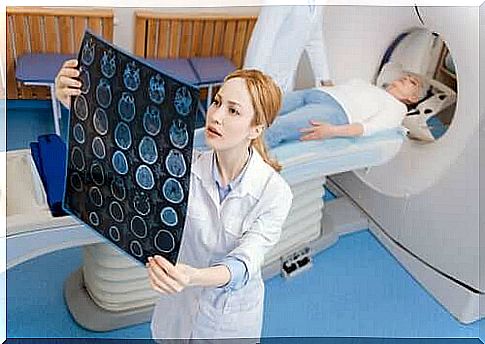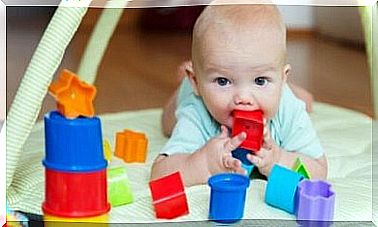Do A CT Scan: In Which Cases Is It Indicated?

CT is a radiological examination performed to diagnose many diseases. In this article we present some interesting facts on this and explain when a CT scan is indicated.
What is the CT scan?
CT scan (or computed axial tomography) is an imaging test. It is performed using an X-ray device which, instead of emitting only one beam of rays, as in the case of a classic radiography, emits many and in different directions.
These light beams result in different images. The images obtained are processed on the computer, essentially creating a reconstruction by planes of the part of the body being analyzed or, if this is the case, of the interior of the whole body.
The computer can even set the images to render a three-dimensional image of the inside of the body. Therefore, the images that we can obtain from a CT scan are much more detailed than those we would obtain with a classic X-ray.

What is CT based on?
The images of the internal tissues depend on the different absorption of radiation by the same. Thus, we will be able to observe various colors for bone tissue, tendons, soft tissues, nervous tissue, etc.
For example, the bones are recognizable by their white color. Parts where there is air, such as the lungs, will be darker in color and those with intermediate density, such as the heart or liver, will be gray in color.
For what purpose do a CT scan?
Since it is a quick exam, CT is used to assess the state of the inside of the body in emergency situations. For example, in the event of a car accident or suspected brain infarction or stroke.
Furthermore, it is one of the main tests in the diagnosis and evaluation of various cancers. Among the main ones we could mention lung, ovarian or liver cancer.
Finally, different contrast agents can be applied during the examination, useful to produce even more detailed images of specific parts.
How is it done?
The CT scan is a quick, easy to perform and painless exam. In the preparation phase, the doctor will ask the patient if he has any allergies or if he has a prosthesis.
The patient will need to remove metal objects, hearing implants and other objects that could interfere with the examination.
Then he will have to lie down in a certain position, in order to facilitate the acquisition of the desired image. He will remain lying down, motionless in a given position; in fact, the bed will move in and out of the machine.
It usually lasts no longer than 30 minutes. Indeed, in the event that a latest generation machinery is used or if the examination is performed on a child, it can last even less.

Can a CT scan be dangerous?
The riskiest aspect of CT scans is radiation exposure, but the amount you are exposed to is safe. Still, there is always a small chance of developing a form of cancer from this exam.
The benefits, however, are always greater than the risk of developing cancer. Different in the case of a pregnant woman: the patient, in fact, must always inform the doctor in case the need for a CT scan arises.
Generally, this test is not recommended for pregnant women and is only performed if the potential benefits are far greater than the possible risks it poses to the fetus from the radiation emitted.
To sum up
The CT scan is a quick, simple and painless examination that can provide a lot of important information in the diagnostic process of many diseases or in the case of emergency situations.
With advances in technology, its use is increasingly common and the techniques for interpreting results are being refined more and more.









